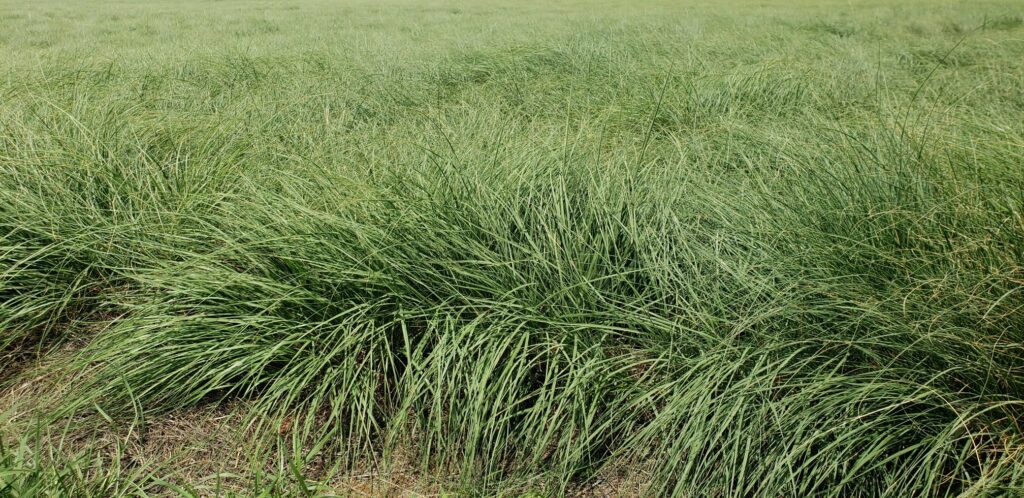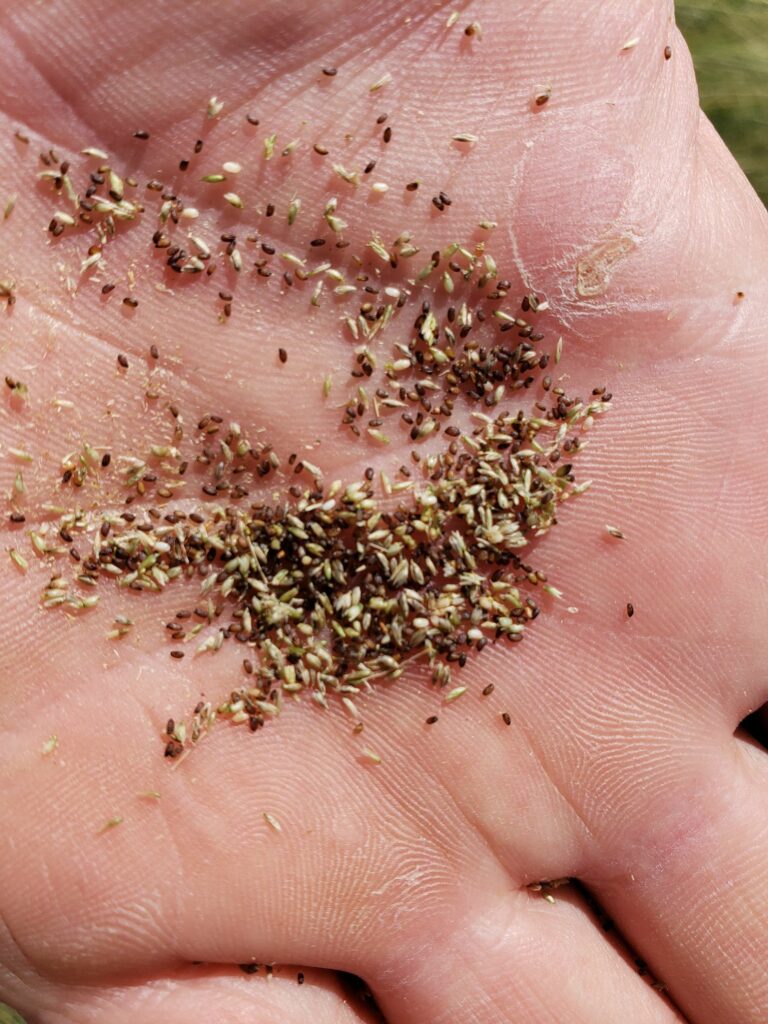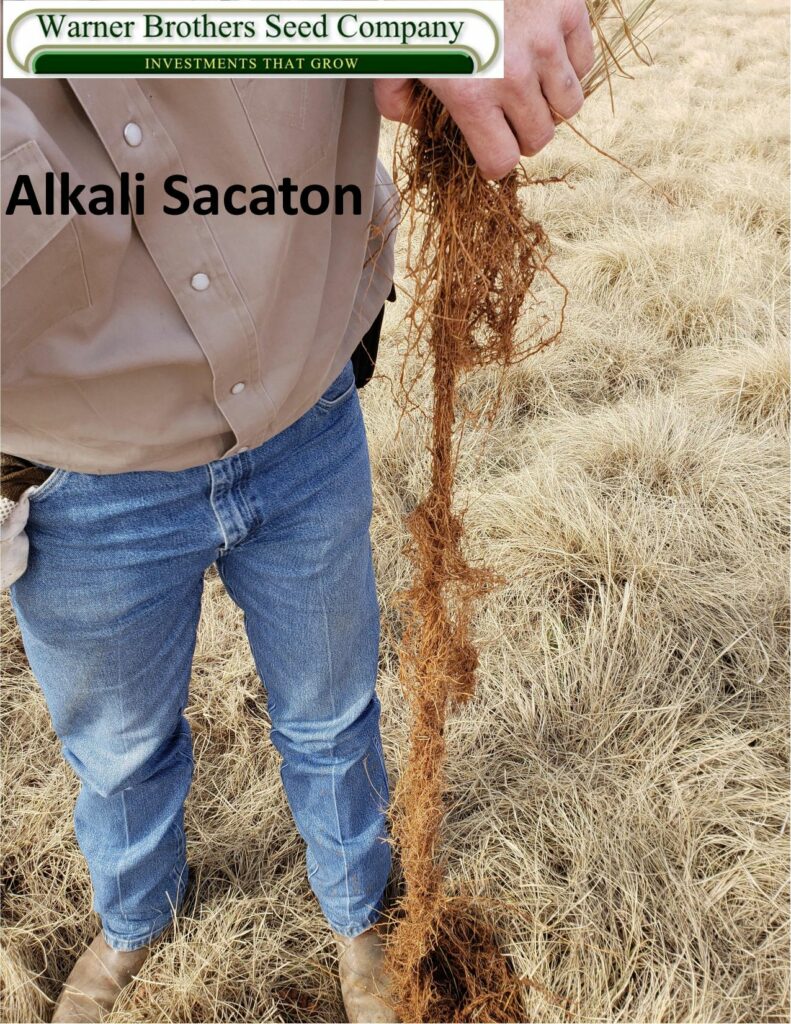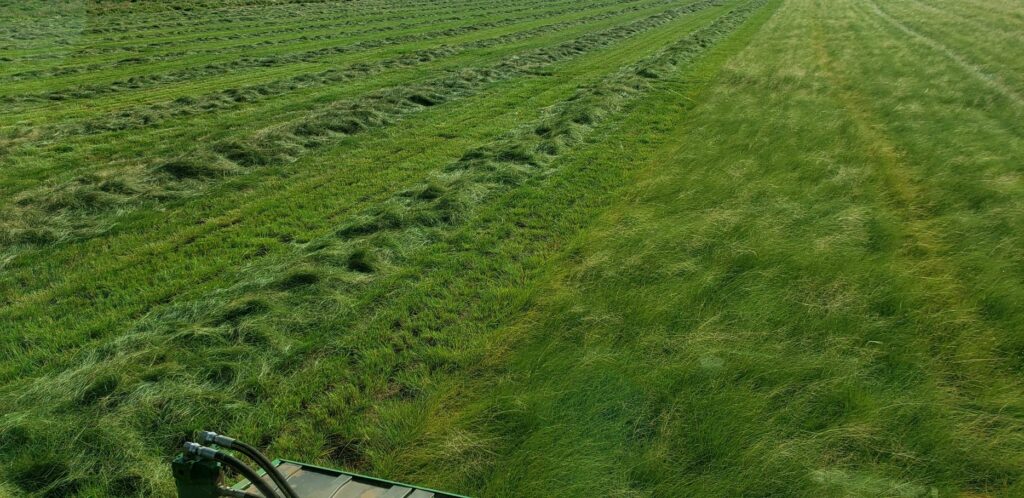Alkali Sacaton
(Sporobolus airoides)

Alkali Sacaton is a vigorous, high quality, perennial native bunchgrass that occurs throughout the western and southwestern part of the United States. This warm-season grass is commonly found on moist, saline or alkaline soils especially in low lying or flooded areas and valleys. Normally, the stands of pure Alkali Sacaton have a distinctive tufted or bunchy appearance. Its major distribution is in the tall-grass prairie of the Central States and along the eastern edge of the Great Plains.
Alkali Sacaton can reach heights of 2- 4 feet tall under favorable soil and moisture conditions. Leaf blades are about 2-18 inches long and approximately 1/4 inch wide. The leaves may be hairy near the base, and the sheaths are usually hairy. The flowering stalks are stout, coarse, and solid; the stalks of most other grasses are hollow. The extensive root system penetrates deeply. The grass grows well on most soil types but is most abundant on moist, well-drained soils.
The abundant, leafy forage is palatable to all classes of livestock when it is green and vegetative. We have had protein readings as high as 17%. However, as it matures palatability is drastically reduced. As standing forage for winter grazing Alkali Sacaton provides very poor quality forage. Should be utilized before dormancy.

Seedlings should be made on a well-prepared, firm seedbed free from weeds. Seeding rates of 2- 3 pure live seed pounds per acre have given excellent results. Full protection during the period of establishment is necessary; weeds should be mowed to lessen the competition for water, sun, and nutrients.

General Characteristics
| Growth Type: | Bunch |
| Life Span: | Perennial |
| Growing Season: | Warm Season |
| Native/Introduced: | Native |
| Plant Height: | 2-4 feet |
| Cold Tolerance: | Fair |
| Drought Tolerance: | Good |
| Salt Tolerance: | Excellent |
| Soil Type: | Loam - Clay |
| Minimum Rainfall: | 10 inches |
| Planting Rate: | 2-3 pls |
| Planting Date: | Feb. - June |
| Seed Type: | Hard |
| Uses: | Grazing Wildlife Habitat Erosion Control Reclamation |


Alkali Sacaton is a warm season, native, perennial bunch grass known for growing in alkaline, riparian, and dry areas. It is typically used as a reclamation grass and it has a deep and fibrous root system that helps with erosion control. Alkali Sacaton grows in saline and non-saline soils,sometimes in dense pure stands. It has broad pH and salinity tolerance, and is common in moist alkaline flats.

